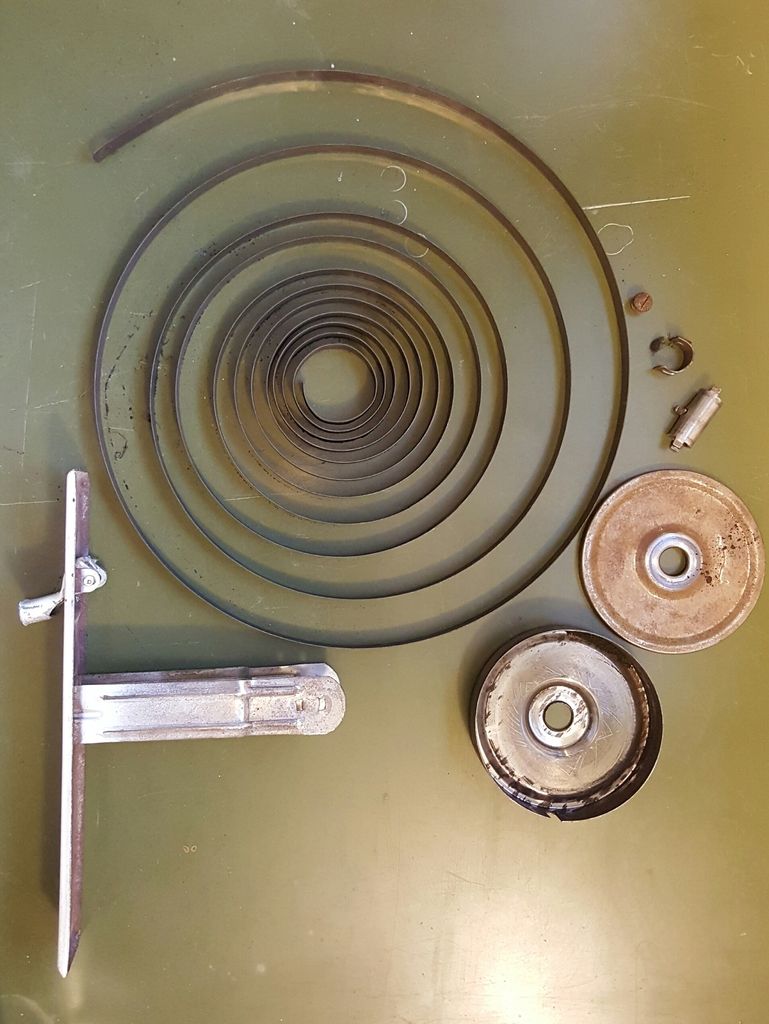femurat wrote:Go ahead and try it, and let us know how it turns out.
Cheers

Went ahead and ordered a few to experiment with (from the source listed in a previous post). Clock springs do come in heavier thicknesses for mantle clocks, wind up grandmother clocks, etc. The .008 thickness was for a different project. The ones for picks were between 0.0165" and 0.02".

Unwound one of the 0.02" X 5/16" springs. There was some curvature in the spring. the photo below is after shearing off about 6".

The piece sheared off was ground into a pick. It was fabulous steel. Very hard but not brittle. The sparks off the grinder showed very high carbon content. It was not the easiest metal to grind away. It felt harder than shim stock that I've ground before and much harder than bandsaw blade material that I have used recently.

The pick worked fine, but I was wondering how much usable steel there was given the curvature of the spring. Tired bending it by hand but started getting some uneven bends in it. If this were a industrial plant metal that has curvature would be ran through a tension-leveler. That is a series of rollers that bend the metal repeatedly up and down and each bend is past the yield strength (or something like that). Those machines use some serious motors to pull the metal through. I thought that maybe something like that could be done. Found some angle iron with holes punched in them (came with a garage door opener?) and found some bolts. Alexander Weygers's
The Complete Modern Blacksmith describes a similar method to straighten bent wire.


After threading the strip I pulled it through with a pair of pliers--if it is not hard to pull through it is not doing anything.
That did not remove all the curvature but reduced it a lot and got rid of the uneven bends I put in it. Clock makers have gizmos for winding springs and probably if one had one of those and would up the spring in the opposite direction it would remove all of the curvature. Only problem is they cost a couple of hundred dollars, but a handy person might be able to make one with some scrap. Heating it red hot would probably make it easier to straighten, but I liked the heat treatment that the steel came with and did not want to have to re-harden and temper it.
Sheared the remaining stock into 6" lengths. For those lengths there was no curvature or what curvature there was it was removed by hand. The last several inches were unusable.

Six pieces plus the pick already made, material for seven picks with really good (German?) steel for $2, could do worse.





